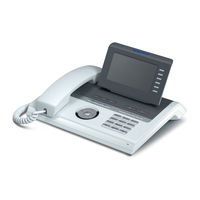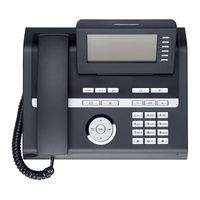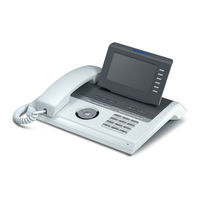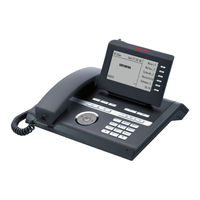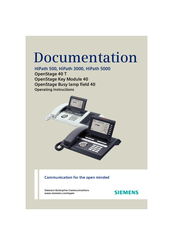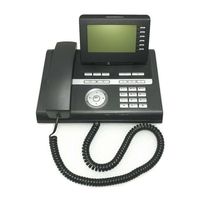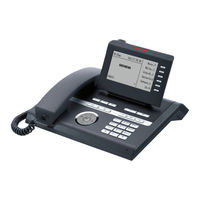Siemens OpenStage Key Module 40 Manuals
Manuals and User Guides for Siemens OpenStage Key Module 40. We have 10 Siemens OpenStage Key Module 40 manuals available for free PDF download: User Manual, Operating Manual, Operating Instructions Manual
Advertisement
Siemens OpenStage Key Module 40 User Manual (217 pages)
Siemens Telephone User Manual
Table of Contents
Advertisement
Siemens OpenStage Key Module 40 Operating Instructions Manual (136 pages)
Siemens HiPath / OpenStage Telephones Operating Instructions
Table of Contents
Advertisement
